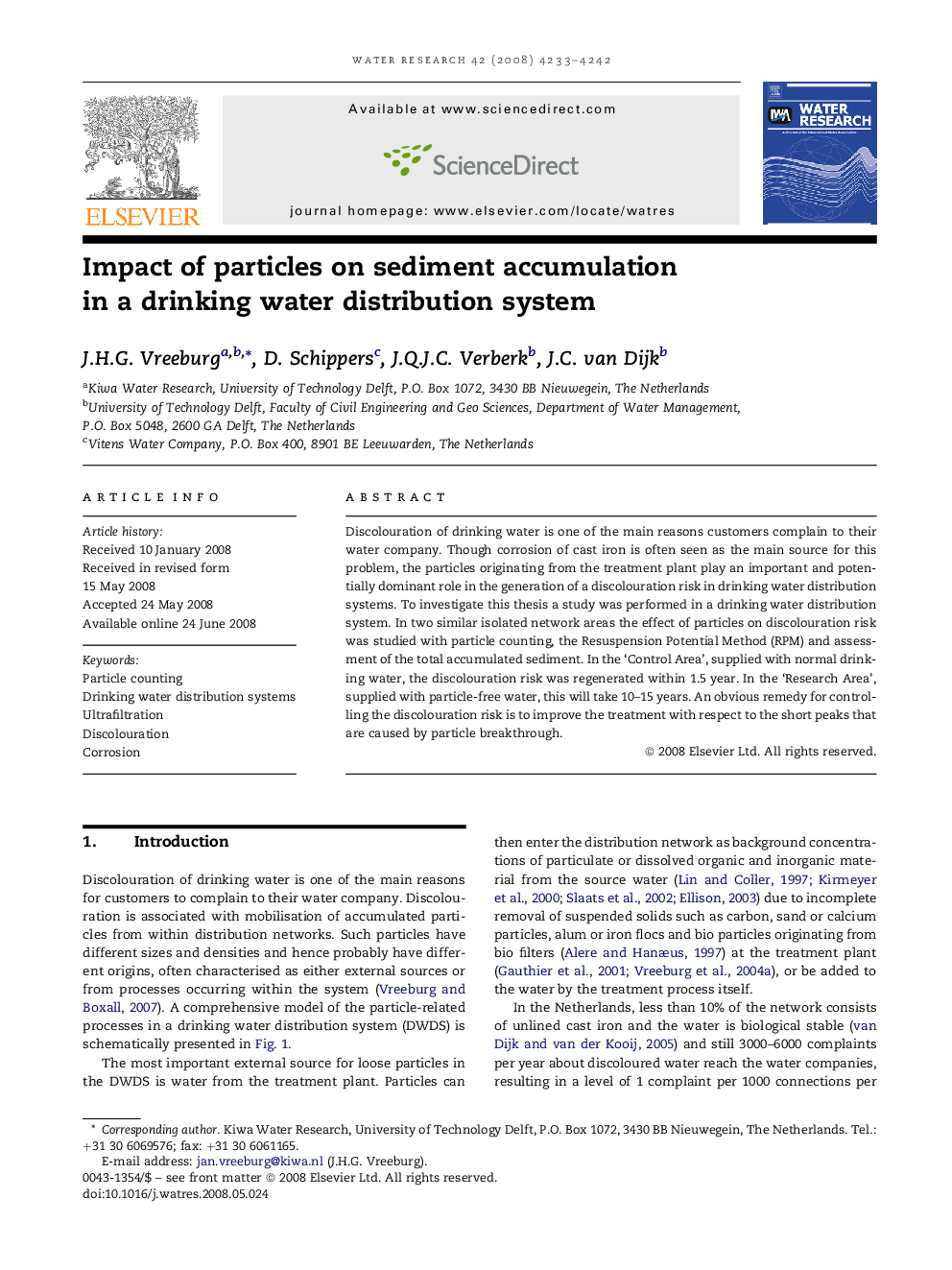| Article ID | Journal | Published Year | Pages | File Type |
|---|---|---|---|---|
| 4485791 | Water Research | 2008 | 10 Pages |
Discolouration of drinking water is one of the main reasons customers complain to their water company. Though corrosion of cast iron is often seen as the main source for this problem, the particles originating from the treatment plant play an important and potentially dominant role in the generation of a discolouration risk in drinking water distribution systems. To investigate this thesis a study was performed in a drinking water distribution system. In two similar isolated network areas the effect of particles on discolouration risk was studied with particle counting, the Resuspension Potential Method (RPM) and assessment of the total accumulated sediment. In the ‘Control Area’, supplied with normal drinking water, the discolouration risk was regenerated within 1.5 year. In the ‘Research Area’, supplied with particle-free water, this will take 10–15 years. An obvious remedy for controlling the discolouration risk is to improve the treatment with respect to the short peaks that are caused by particle breakthrough.
